#adrienne monnier
Text

Sylvia Beach, March 14, 1887 – October 5, 1962.
With James Joyce (left) and Adrienne Monnier (right) at Shakespeare & Co. 1938 photo by Gisèle Freund.
140 notes
·
View notes
Photo

Bloomsday 2023
(image: James Joyce, (1922), Ulysse, Translation by Auguste Morel and Stuart Gilbert, Text revised by Valery Larbaud and James Joyce, Adrienne Monnier / La Maison des Amis des Livres, Paris, 1929)
#graphic design#book#cover#book cover#james joyce#ulysses#bloomsday#auguste morel#stuart gilbert#valery larbaud#adrienne monnier#la maison des amis des livres#1920s#2020s
52 notes
·
View notes
Text
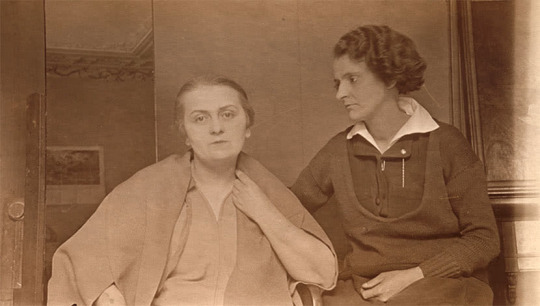
Behind the famous bookstore in Paris, Shakespeare and Company, were a lesbian owner Sylvia Beach and her lover Adrienne Monnier.
The bookshop Shakespeare and Company has been at the heart of the Paris literary scene for decades, particularly during the 1920s and 1930s. It was set up by American Sylvia Beach who, along with her partner Adrienne Monnier, ran the store until World War II.
…
Down the street on rue de l'Odéon was another bookstore, La Maison des Amis des Livres.
Its owner Adrienne Monnier was Sylvia's partner. Their love story was said to have begun when Sylvia's hat blew away in the wind on rue de l'Odéon, and Adrienne chased after it. 'J'aime beaucoup l'Amérique,' declared Adrienne, to which Sylvia replied, 'J'aime beaucoup la France.' They were a couple for 36 years until Adrienné's death in 1955.
Sylvia was also the publisher of James Joyce’s “Ulysses.”
#sylvia beach#adrienne monnier#shakespeare and company#bookstore#Paris#lgbtq history#what a partnership
28 notes
·
View notes
Text


Plaque en hommage à : Adrienne Monnier
Type : Œuvre
Adresse : 7 rue de l'Odéon, 75006 Paris, France
Date de pose : septembre 2021
Texte : Adrienne Monnier (1892 - 1955) a fondé ici en 1915 la Maison des Amis des Livres, librairie et bibliothèque de prêt. Elle y accueillit Apollinaire, les surréalistes, Gide, Claudel, Colette et Violette Leduc. Elle a édité la première traduction en français d'Ulysse de James Joyce.
Quelques précisions : Adrienne Monnier (1891-1955) est une écrivaine, éditrice et libraire française. En 1915, elle ouvre sa propre librairie, la Maison des Amis des Livres, qui devient un haut lieu du milieu littéraire parisien et qui accueille de nombreux écrivains. La librairie fonctionnait en tandem avec un autre établissement, Shakespeare and Company, créée par Sylvia Beach, qui fut la compagne de Monnier et qui est également commémorée par une autre plaque commémorative située non loin de celle présentée ici. Elle publia la première traduction d'Ulysses de James Joyce, et fut la directrice de la revue littéraire Le Navire d'argent. Elle se suicide pour échapper aux complications de la maladie dont elle est atteinte.
0 notes
Text
Adrienne Monnier "Rue de L'Odéon. Storia di una libreria che ha fatto il Novecento", presentazione
Adrienne Monnier “Rue de L’Odéon. Storia di una libreria che ha fatto il Novecento”, presentazione
Ripubblicato da Bordo Libero, la Casa Editrice nata di recente a Messina, con la traduzione di Elena Paul, ritorna in libreria un testo scritto da Adrienne Monnier (1892-1956) prima donna in Francia a fondare autonomamente la libreria La maison des amis des livres, in Rue de L’Odeon a Parigi il 15 novembre del 1915, che diventerà un punto di riferimento culturale nel Quartiere latino durante il…

View On WordPress
#Adrienne Monnier "Rue de L&039;Odéon. Storia di una libreria che ha fatto il Novecento"#Bordo Libero Editore
0 notes
Photo

On this day, 19 December 1908, photographer, socialist and anti-fascist Gisele Freund was born to a Jewish family in Germany. She photographed the German anti-fascist movement until one of her friends was jailed and murdered, upon which she went to France where she began a relationship with avant-garde poet Adrienne Monnier, who arranged for her to marry a male friend to remain in the country. Following the Nazi invasion of France she fled to Argentina, where she worked for Magnum Photos until forced to break ties following the American Red Scare. After publication of photographs she took of Eva Peron wearing lavish jewellery, she was forced to leave the country as it contradicted the Peronist propaganda about austerity. She eventually returned to France where she lived until her death in 2000. https://www.facebook.com/workingclasshistory/photos/a.296224173896073/2165700273615111/?type=3
244 notes
·
View notes
Text
THIS DAY IN GAY HISTORY
based on: The White Crane Institute's 'Gay Wisdom', Gay Birthdays, Gay For Today, Famous GLBT, glbt-Gay Encylopedia, Today in Gay History, Wikipedia, and more …

51 AD – Rome: Titus Flavius Domitianus (51-96) was born in Rome. The Emperor is the first recorded case of a married man leaving his wife for a man, a mime named Paris. After a public outcry Titus killed Paris and went back to his wife. However, he continued his affairs with young men; his wife had him assassinated.

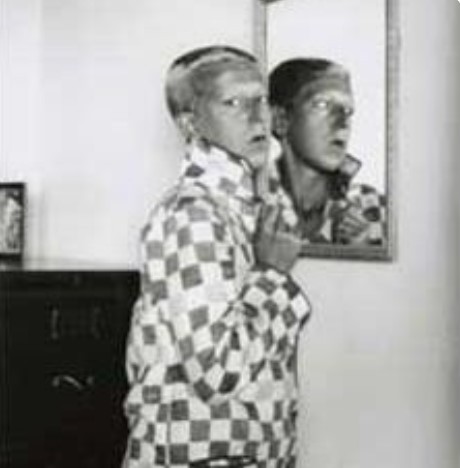

1894 – Born Lucy Renee Mathilde Schwob, Claude Cahun (d.1954) was a French artist, photographer and writer. Her work was both political and personal, and often played with the concepts of gender and sexuality.
She began making photographic self-portraits as early as 1912, when she was 18 years old, and continued taking images of herself through the 1930s.
Around 1919, she settled on the pseudonym Claude Cahun, intentionally selecting a sexually ambiguous name. During the early 20s, she settled in Paris with her life-long partner and stepsister Suzanne Malherbe. For the rest of their lives together, Cahun and Malherbe collaborated on various written works, sculptures, photomontages and collages. She published articles and novels, notably in the periodical "Mercure de France", and befriended Henri Michaux, Pierre Morhange and Robert Desnos.
Around 1922 she and Malherbe began holding artists' salons at their home. Among the regulars who would attend were artists Henri Michaux and André Breton and literary entrepreneurs Sylvia Beach and Adrienne Monnier. Cahun's work encompassed writing, photography, and theater. She is most remembered for her highly-staged self portraits and tableaux that incorporated the visual aesthetics of Surrealism
In 1937 Cahun and Malherbe settled in Jersey. Following the fall of France and the German occupation of Jersey and the other Channel Islands, they became active as resistance workers and propagandists. Fervently against war, the two worked extensively in producing anti-German fliers. The couple then dressed up and attended many German military events in Jersey, strategically placing them in soldier's pockets, on their chairs, etc. Also, fliers were inconspicuously crumpled up and thrown into cars and windows. In many ways, Cahun and Malherbe's resistance efforts were not only political but artistic actions, using their creative talents to manipulate and undermine the authority which they despised.
In 1944 they were arrested and sentenced to death, but the sentences were never carried out. However, Cahun's health never recovered from her treatment in jail, and she died in 1954. She is buried in St Brelade's Church with her partner Suzanne Malherbe.


1879 – (Friedrich Heinrich Karl) Fritz Haarmann (d.1925), also known as the Butcher of Hanover and the Vampire of Hanover, was a German serial killer who is believed to have been responsible for the murder of 27 boys and young men between 1918 and 1924. He was convicted, found guilty of 24 murders and executed.
Haarmann victims largely consisted of young male commuters, runaways and, occasionally, male prostitutes who hung around Hanover's central station, whom Haarmann would lure back to his apartment and then kill by biting through their throats, sometimes while sodomizing them. All of Haarmann's victims were dismembered before they were discarded, usually in the Leine River. The possessions of several victims were either sold on the black market or retained by either Haarmann or his younger lover, Hans Grans. Rumor also had it that Haarmann would peddle meat from the bodies of his victims as canned black market pork. Although no physical evidence was ever produced to confirm this, Haarmann was known to be an active trader in contraband meat.
Haarmann's accomplice and live-in partner, Hans Grans, sold the possessions of several of the victims cheaply on the black market, and kept other possessions for himself, and Haarmann initially claimed that although Grans knew of many of his murders, and personally urged him to kill two of the victims so he could obtain their clothing and personal possessions, was otherwise not involved in the murders.
Haarmann was eventually apprehended when numerous skeletal remains, which he had dumped into the Leine River, washed up downstream in May and June 1924. The police decided to drag the river and discovered more than 500 human bones which were later confirmed as having come from at least 22 separate human individuals.
Suspicion quickly fell upon Haarmann, who had convictions for molesting children and had been connected to the disappearance of Friedel Rothe in 1918. Haarmann was placed under surveillance and on the night of June 22, was observed prowling Hanover's central station. He was quickly arrested after trying to lure a boy to his apartment. His apartment was searched and the walls were found to be heavily bloodstained. Haarmann tried to explain this as a by-product of his illegal trade as a butcher. However, clothing and personal items known to be possessions of several missing youths were also found in his home.
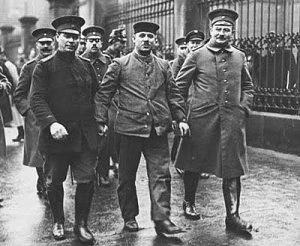
Haarmann (center) after sentencing
Under interrogation, Haarmann quickly confessed to raping, killing and butchering young men since 1918. When asked how many he had killed, Haarmann claimed "somewhere between 50 and 70". The police, however, could only connect Haarmann with the disappearance of 27 youths, and he was charged with 27 murders. It is interesting to note that only a quarter of the personal items found in his apartment were identified as having belonged to any of the victims.


1953 – Fenton Johnson, the award-winning author of "Crossing the River," "Scissors, Paper, Rock," "Geography of the Heart: A Memoir," and "Keeping Faith: A Skeptic's Journey" was born today. He was born in Kentucky and was the ninth out of nine children.
He dreamed of becoming the U.S. President when he was younger, but decided to become a writer after he enrolled in Stanford University. Johnson is Gay, and explores Gay issues in his work. His memoir "Geography of the Heart" deals with the loss of his partner Larry to AIDS.
He is currently an associate professor of creative writing at the University of Arizona and is working on a new novel The Man Who Loved Birds: A Novel. Johnson has received awards from the Wallace Stegner and James Michener Fellowships in Fiction and National Endowment for the Arts Fellowships in both fiction and creative nonfiction. He has also received a Kentucky Literary Award, two Lambda Literary Awards for best creative nonfiction, as well as the American Library Association Award for best Gay/Lesbian nonfiction.


Furnish with husband Elton John
1962 – David Furnish is a Canadian/British filmmaker, former advertising executive, and now a film director and producer most known for his documentary Elton John: Tantrums & Tiaras. He is the civil partner of British entertainer Elton John.
David Furnish was born in Scarborough, Ontario, Canada. Furnish graduated from the Sir John A. Macdonald Collegiate Institute in 1981 and received an Honours Business Administration undergraduate degree fromthe University of Western Ontario in 1985. He was recruited by the advertising agency Ogilvy & Mather, eventually transferred to the London, England, office and was appointed to their Board.
A mutual friend of Furnish and Elton John left a message for Furnish inviting him to a dinner party at John's house on October 30, 1993. Initially fearing that the dinner would be unpleasant, or that John would be boring, he instead found John to be interesting and engaging. Both were attracted to each other; John asked for his phone number and the two had a private dinner the following night.
Furnish resigned from his position in 1994 after finding it increasingly difficult to balance the position's demands with the demands of his new life with John. With a keen interest in film, Furnish enrolled in courses at the British Film Institute. He is currently co-chief of Rocket Pictures along with John. Furnish is a contributing editor for Tatler magazine and also is a regular columnist for Interview and GQ. Furnish currently serves on the board of the Elton John AIDS Foundation, attending fundraisers and other events in support of that cause.
Furnish was proposed to by John in May 2005 at a dinner party with friends and family at one of their homes in Old Windsor. Furnish and John entered into a civil partnership on December 21, 2005, the first day that civil partnerships could be performed in England, in the town of Windsor, Berkshire. Their son Zachary Jackson Levon Furnish-John was born December 25, 2010 in California via a surrogate. Zachary weighed 7 pounds, 15 ounces.

The California Supreme Court upholds the removal of Judge Leland Geiler for prodding a man with a dildo.

2006 – On this date the Supreme Court of New Jersey ruled that Gay couples have same rights as heterosexual couples.


8 notes
·
View notes
Text
Sylvia Beach (1887-1962)
A writer, publisher and the owner of the prominent Shakespeare and company bookstore in Paris (yes, the pictures of which you have probably seen on pinterest).
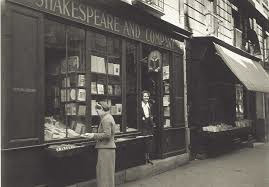
She was an American-born bookseller and publisher who lived most of her life in Paris, where she was one of the leading expatriate figures between World War I and II.
Sylvia was born in United Stated but in 1901 her family moved to Paris. Her father’s name was Sylvester Beach and that might be why she changed her birthname (Nancy) to Sylvia later so that she could be Sylvia Beach.
While conducting research at the Bibliothèque Nationale, in a French literary journal Beach read of a lending library and bookshop, La Maison des Amis des Livres. When she came there, she met an owner who turned out to be a young woman Adrienne Monnier. The two later became lovers and lived together for 36 years.
Beach started dreaming of her own book shop , so with Monnier's help, Beach opened an English language bookstore and lending library that she named Shakespeare and Company.
Shakespeare and Company quickly attracted both French and American readers, including aspiring writers to whom Beach offered hospitality and encouragement as well as books.
In July 1920, Beach met the writer James Joyce at a dinner party. Soon after, Joyce joined Beach's lending library. Joyce had been trying, unsuccessfully, to publish his manuscript for his masterpiece, Ulysses, and Beach, seeing his frustration, offered to publish it.
Shakespeare and Company gained considerable fame after it published Ulysses in 1922.
Beach would later be financially stranded when Joyce signed on with another publisher, leaving Beach in debt after she had bankrolled, and suffered severe losses from, the publication of Ulysses.
Shakespeare and Company experienced financial difficulty throughout the Great Depression of the 1930s but remained supported by wealthy friends, including Bryher.
In 1936 when Beach thought that she would be forced to close her shop, André Gide organized a group of writers into a club called Friends of Shakespeare and Company. Subscribers paid 200 francs a year to attend readings at Shakespeare and Company.
Beach later recalled "we were so glorious with all these famous writers and all the press we received that we began to do very well in business".
In 1956, Beach wrote Shakespeare and Company, a memoir of the inter-war years that details the cultural life of Paris at the time. The book contains first-hand observations of James Joyce, D. H. Lawrence, Ernest Hemingway, Gertrude Stein, Stephen Benet and many others.
After Monnier's (her lover) suicide in 1955, Beach had a relationship with Camilla Steinbrugge.Although Beach's income was modest during the last years of her life, she was widely honored for her publication of Ulysses and her support of aspiring writers during the 1920s. Beach died in 1962.
George Whitman (her friend) opened a new bookshop in 1951 at a different location in Paris (in the rue de la Bûcherie) originally called Le Mistral, but renamed Shakespeare and Company in 1964 in honor of Sylvia Beach. Since his death in 2011, it has been run by his daughter Sylvia Whitman (who was named after Sylvia Beach).


19 notes
·
View notes
Text

Adrienne Monnier (1892-1955), French bookseller, in her “Maison des Amis des livres”, 1935
1 note
·
View note
Text
OVER THE RAINBOW (parte I)

Nello scorso mese di agosto il Centre Pompidou ha ospitato la mostra "Over the rainbow", una mostra che riunisce più di cinquecento opere d'arte e documenti, principalmente dalla collezione del Pompidou, e riferiti per la gran parte alla produzione artistica francese. Le opere che coprono un arco temporale, che va dal XIX secolo al 2000 e oltre, sono di artisti che hanno contribuito a trasformare la rappresentazione delle sessualità cosiddette “minoritarie” e hanno partecipato alle lotte delle comunità LGBTQ+ per il riconoscimento dei loro diritti. Non ne scrissi a suo tempo, ma lo faccio volentieri ora, dopo aver anche consultato il magnifico catalogo, edito dal Centre Pompidou, di cui ho appena terminato la lettura. Le opere viste erano di grande qualità, anche se molte non propriamente una novità, ma la lettura del catalogo rivela tante cuorisità e informa ampiamente su una serie di fatti e circostanze che dànno la misura di quanto sia stata ardua la conquista dei diritti per le persone con un orientamento sessuale, considerato non conforme alla "norma". La preziosissima cronologia del volume (stampata su pagine fucsia-fluo) prende la mosse dal 1868 quando il giornalista, scrittore e militante Karl-Maria Kerybeny utilizza per la prima volta i termini "omosessuale" e "eterosessuale". A far data da quel remoto anno, il catalogo analizza centinaia di opere letterarie, opere d'arte, di grafica e fotografie, ma anche film ed opere teatrali che hanno dato un notevole supporto culturale e, in fin dei conti, resa possibile la conquista di diritti civili che oggi ci appaiono assolutamente irrinunciabili. Nel repertorio fanno spicco vere e proprie chicche come le poesie di Natalie Clifford Barney : in mostra una preziosa edizione dei suoi "Pensées d'una amazone" del 1920. La Barney, espatriata americana, non per nulla considerava Parigi "la seul ville où l'on peut vivre et s'exprimer à sa guisa..." Di eccezionale bellezza il carnet di disegni di Marie Laurencin, ritrattista e decoratrice, che disegna una donna indipendente, libera nel desiderare l'attenzione di altre donne. Questa scrittrice, oltre che artista, racconterà ne "Le Carnet des nuits" di aver incominciato ad illustrare, a vent'anni, una preziosa edizione di "Les Fleurs du Mal". L'incontro di Adrienne Monnier e Sylvia Beach nel 1916, nei locali della libreria "la Maison des Amis des Livres" all'Odeon, farà diventare il luogo un punto d'incontro di artisti ed intellettuali e proprio lì Sylvia Beach matura l'idea di far nascere una sua libreria, quella "Shakespeare & Co." che sarà da subito frequentata da Margaret Anderson, Natalie Clifford Braney, Gertrude Stein, accomunate naturalmente, e non solo, dal fatto di essere lesbiche "militanti". Tantissimi gli argomenti trattati dagli esplicitissimi disegni “honoérotiques” di Jean Cocteau ai dipinti di Gerda Wegener e Lili Elbe. Il secolo breve scorre veloce e sono davvero numerose le figure rappresentative della lotta per i diritti di queste sessualità non omologate, che spesso viaggiano sottotraccia, come nel caso del travestitismo nel mondo del cabaret, per fare un esempio quello di Félix Mayol gloria dell’Eldorado e della Scala, noti locali parigini (quest’ultimo molto conosciuto anche in Italia). Sul finire del secolo, quando rivendicazioni e lotte escono allo scoperto, anche le arti visive sono massicciamente sul campo di battaglia. È il caso della cosiddetta “grafica queer”, quella per esempio del movimento/scuola Akimbo, nato a San Francisco, che metterà spesso nel suo mirino la politica conservator-reazionaria del presidente George H.W. Bush (continua)
0 notes
Text
A zonzo per la Francia: Sylvia Beach

La donna che, nella Francia del primo dopoguerra, fu un punto di riferimento per gli scrittori americani ed inglesi a Parigi…
Nata a Baltimora nel 1887, Sylvia Beach era la terzogenita del pastore presbiteriano Sylvester Woodbridge Beach e di Eleanor Thomazine Orbison e, dopo aver vissuto l'infanzia fra il Maryland e il New Jersey, da adolescente viaggiò in Europa con il padre, che si spostava spesso per lavoro.
In poco tempo la ragazza si appassionò alla letteratura e cominciò a sognare di aprire una libreria francese a New York ma, giunta a Parigi nel 1916 per studiare letteratura, capitò in una libreria aperta solo l'anno prima da Adrienne Monnier, che divenne preso la sua compagna nella vita e nel lavoro.
Il 19 novembre 1919 Sylvia aprì la sua libreria, la Shakespeare and Company, situata in rue Dupuytren 8, a pochi passi da rue de l'Odéon 7, dove di trovava quella di Adrienne, la Maison des Amis des Livres, e la porta d'ingresso del nuovo negozio era sormontata da una tabella che rappresentava Shakespeare.
Le due donne non si limitavano a vendere i libri, ma li noleggiavano con l’acquisto di una tessera, inoltre Sylvia si era specializzata nella letteratura anglosassone e vendeva solo ed esclusivamente libri che aveva letto e amato.
Nei mesi successivi alla fine della Prima guerra mondiale, la capitale francese si era popolata di una folta schiera di esuli americani che avevano deciso di stabilirsi lì per respirare aria nuova rispetto a quella degli Stati Uniti, con nomi come Hemingway, Ezra Pound, Man Ray, Francis Scott Fitzgerald, T.S.Eliot o Gertrude Stein, che presero a frequentare la libreria di Adrienne, e anche quella di Sylvia che poi si spostò anch'essa in rue de l'Odéon, di fronte alla Maison des Amis des Livres.
Le due librerie non erano solo delle attività commerciali, infatti Adrienne, che amava cucinare, offriva degli aperitivi agli ospiti, e alcuni di essi bevevano vino rosso in scatolette vuote del tonno e restavano a dormire lì, si potevano unire alle serate musicisti come Eric Satie e Francis Poulenc, che improvvisavano dei concertini, mentre Sylvia era una brillante padrona di casa, con una parlantina briosa che si entusiasmava sinceramente alle idee dei suoi ospiti.
La Beach conobbe James Joyce ad una festa nell'estate del 1920 e lo scrittore irlandese era da poco arrivato nella capitale francese con la moglie, Nora Barnacle, e i due figli, Giorgio e Lucia.
Anche se Sylvia provava un senso di soggezione nei confronti di Joyce, voleva collaborare con quello che già considerava un genio delle letteratura e così i due parlarono dell'Ulisse, il libro a cui stava lavorando James, e lei si propose come editrice.
Sylvia si dovette scontrare con i capricci di James, che continuava a modificare il manoscritto quando era già in fase di trascrizione, oltre alle difficoltà economiche aggravate dal fatto che lui le metteva in conto tutto, anche le cene in ristoranti lussuosi per sé e la sua famiglia, inoltre la censura le causò difficoltà a trovare un tipografo che si assumesse la responsabilità di stampare un opera considerata oscena, per poi trovarlo a Digione, e le prime copie arrivarono col treno il 2 febbraio 1922, il giorno del quarantesimo compleanno dello scrittore.
In seguito la Beach continuò per anni a curare le ristampe e la distribuzione del libro, inoltre anche Hemingway si espose, coinvolgendo un amico che faceva la spola fra Toronto e gli Usa con due libri alla volta.
La generosità da parte di Sylvia non fu però adeguatamente ripagata dallo scrittore, dal momento che nel 1934 Joyce la lasciò, dopo aver firmato un accordo con Random House, a cui cedeva i diritti di pubblicazione.
Dopo che il 1 settembre 1939 la Francia entrò in guerra contro la Germania di Hitler gestire la libreria divenne sempre più difficile e, quando i nazisti entrarono a Parigi, la Beach si oppose alla richiesta di un ufficiale tedesco di consegnagli una copia del Fiennagans Wake di Joyce, così fu arrestata e mandata in un campo di concentramento a Vittel, in un ex stabilimento termale, dove venivano rinchiusi i prigionieri di Paesi nemici o neutrali in attesa di uno scambio di prigionieri civili tedeschi.
Sylvia restò nel campo per sei mesi, poi tornò a Parigi dove visse in clandestinità fino alla fine della guerra, ma la sua libreria non riaprì ma più.
Nel 1955, per una grave malattia, Adrienne Monnier si tolse la vita, mentre Sylvia morì nel 1962 nella sua Parigi.
Read the full article
0 notes
Text


Plaque en hommage à : Sylvia Beach
Type : Lieu de résidence, Œuvre, Lieu de décès
Adresse : 12 rue de l'Odéon, 75006 Paris, France
Date de pose :
Texte : En 1922, dans cette maison, Melle. Sylvia Beach publia "Ulysses" de James Joyce
Quelques précisions : Sylvia Beach (1887-1962) est une éditrice et libraire américaine. Passionnée de littérature dès l'enfance, elle découvre Paris lors de différents séjours en Europe. Elle y rencontre notamment Adrienne Monnier, propriétaire de la Maison des Amis du Livre (également commémorée par une plaque commémorative située non loin de celle présentée ici), qui deviendra sa compagne. Quelques mois plus tard, elle ouvre sa propre librairie, la célèbre Shakespeare and Company (initialement située rue Dupuytren, à ne pas confondre avec l'actuelle librairie qui porte ce nom située rue de la Bûcherie), qui devient un haut lieu de la scène littéraire parisienne, et publie Ulysses de James Joyce. Profondément féministe et socialiste, elle doit fermer sa librairie pendant la Seconde Guerre mondiale. Elle ne la rouvre pas même une fois le conflit terminé, mais continue à côtoyer le milieu littéraire en publiant ses mémoires et en voyageant fréquemment.
0 notes
Photo

James Joyce, (1922), Ulysses, Translation by Auguste Morel and Stuart Gilbert, Text revised by Valery Larbaud and James Joyce, Adrienne Monnier / La Maison des Amis des Livres, Paris, 1929
#graphic design#book#cover#book cover#bloomsday#james joyce#ulysses#auguste morel#stuart gilbert#valery larbaud#adrienne monnier#la maison des amis des livres#1920s
134 notes
·
View notes
Photo
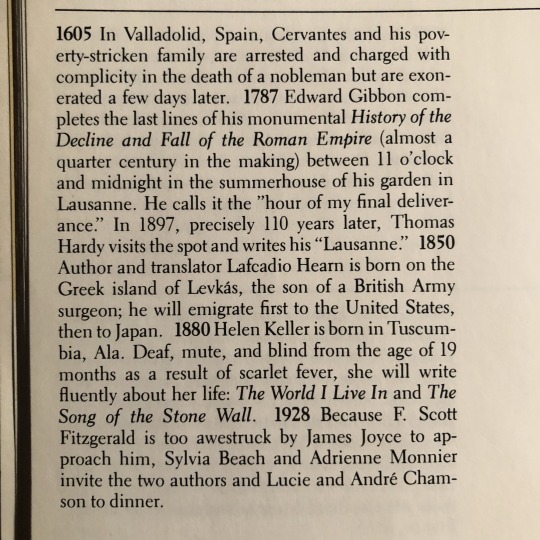
Literary history that happened on 27 June
#june 27#literary history#literary#history#literature#on this date#cervantes#miguel de cervantes#edward gibbon#thomas hardy#helen keller#f. scott fitzgerald#james joyce#sylvia beach#adrienne monnier
183 notes
·
View notes
Photo

Gisèle Freund, Adrienne Monnier dans le parc de Chantilly, 1936.
#Gisèle Freund#freund#photography#adrienne monnier#chantilly#pompidou#Maison des Amis des Livres#centre pompidou#photographie
76 notes
·
View notes
Text

1887 – Throughout her life, poet and novelist Edith Sitwell (d.1964) surrounded herself with gay men, some of whom became her artistic collaborators. Although it is not clear that she ever experienced a sustained sexual relationship with anyone of either sex, her closest emotional bond was with another woman.
Sitwell was the daughter of Sir George and Lady Ida Sitwell. Like most young women of her class, she was educated at home. In 1903, Helen Rootham, an aspiring poet who translated the works of Arthur Rimbaud into English, was engaged as her governess. Under Rootham's tutelage, Sitwell was introduced to the French symbolist poets whose influence is evident in her work, and, in 1913, the two women left the Sitwell family home and set up lodgings in London.
Freed from parental restrictions, Sitwell embarked on a literary career and published her first volume of poetry, The Mother and Other Poems, in 1915. The following year, as the center of a literary circle that included Rootham and her brothers Osbert Sitwell (1892-1969) and Satcheverell Sitwell (1897-1988), she initiated Wheels, an avant-garde literary anthology issued in yearly "cycles" until 1921.
Sitwell disdained what she deemed the traditional "weakness" of female-authored poetry, believing that Sappho, Christina Rossetti, and Emily Dickinson were the only women poets worthy of emulation. Her own growing fame and notoriety as an experimental artist culminated in 1923 with the first public performance of Façade, an "entertainment" in which she recited her cycle of poems from behind a screen and through a megaphone to the accompaniment of music composed and conducted by William Walton.
Although her artistic activities drew much critical derision, they also propelled Sitwell to the forefront of Modernism; she became friends with Virginia Woolf and Gertrude Stein, the latter of whom she introduced to the British public.
The 1930s, by contrast, brought Sitwell personal and professional sorrow as well as severe financial exigency. She moved to Paris in 1932 with the terminally ill Rootham and remained there until her companion's death in 1938. During this sojourn, she concentrated on prose works, including her fantastic historical novel I Live Under a Black Sun, and participated in various literary salons that included Stein, Natalie Barney, Sylvia Beach, and Adrienne Monnier. She also formed a close friendship with Bryher Ellerman, the wealthy lesbian author who served as a generous benefactress for the rest of Sitwell's life.
Her growing cultural pessimism, which became evident in her ambitious narrative poem Gold Coast Customs (1929), was deepened by World War II. "Still Falls the Rain" (1942), later set to music by Benjamin Britten and originally performed by Britten's lover Peter Pears, juxtaposes the bombing of London with the crucifixion of Christ and indicates Sitwell's desire for personal and cosmic spiritual healing.
Her post-war poetry is almost entirely concerned with human suffering on a global scale. The fear of nuclear annihilation produced by the Cold War and the infirmities of age led to her conversion to Catholicism in 1955, with Evelyn Waugh serving as her sponsor.
Both personally and professionally, Sitwell surrounded herself throughout her life with gay men, including her brother Osbert. She was emotionally attached for many years to the painter Pavel Tchelitchew. Additionally, she formed artistic collaborations and friendships with Ronald Firbank, Wilfred Owen, Cecil Beaton, Alvaro Guevara, Stephen Spender, W. H. Auden, and James Purdy. Her last poem, "The Outcasts" (1962), was a gesture of support for the reform of British antihomosexuality laws.
Edith Sitwell was named Dame Commander of the British Empire in 1954. She died December 11, 1964. Her autobiography, Taken Care Of, was published the following year.

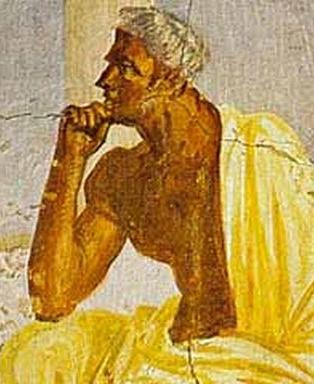
48 BC – Albius Tibullus is born near Rome (d.19 BC). Known primarily as a love elegist, his poems tell of his lust for the handsome Marathus but alas, he never gets him.


1988 – Max Emerson is an American actor, model, author, director and YouTuber. He is known for his modelling and social media profile, particularly on Instagram, and he wrote and directed the movie Hooked. He has appeared on TV in small roles, including the season 5 finale of Glee.
Emerson was born in Vero Beach, Florida and studied for a BFA in performance and directing at the University of Miami, from where he graduated in 2009. Emerson began modeling while he was a student.
He wrote, produced, co-directed and acted in two short films, DipSpit and Earwig, which were shown for the first time at the Miami Gay and Lesbian Film Festival on April 26, 2011. Earwig is a drama about a closeted gay college student, while DipSpit is a comedy about two straight male models who get kicked out and move in with a gay college student.
In October 2015, Emerson announced his intention to produce an independent film called "Hooked" for which he had written the story, telling the story of a homeless gay prostitute called Jack and addressing the problems faced by homeless LGBT youth. He aimed to raise $150,000 for the project via Indiegogo and give half of any profits made to charities benefiting LGBT people. The launch video for the Indiegogo campaign featured Todrick Hall and musician Tom Goss. As part of it he released a single with Goss called "Not Enough". The campaign was supported by Out magazine.
In October 2016, he posted the trailer for the new film. Hooked had its world premiere at NewFest: The New York LGBT Film Festival on June 26, 2017, and its European premiere at the 7th Homochron film festival in Cologne on October 20 the same year.
Emerson wrote an autobiography, Hot Sissy – Life Before Flashbulbs, describing his teenage years growing up in a "redneck" area of Florida. Hot Sissy was released as an e-book and in a limited print run of 500 hardcover copies in December 2014. The limited editions were each signed and came with an original Polaroid picture.
In 2015, Emerson described his move toward sobriety in an Instagram post.
In June 2016, he publicly introduced his boyfriend, Andrés Camilo, an officer in the US Army, in a YouTube video. Emerson has an active social media presence and posts regularly on YouTube where his username is "TheMaxVicious". As of December 2018, he has 1 million followers on Instagram (@maxisms) and 19,500 on Twitter (@TheMaxisms). On YouTube and on social media, Emerson is known for his humor and for showing off his body.
In May 2017, French comic TV presenter Cyril Hanouna used one of Emerson's torso pictures to set up a catfishing profile on a gay dating site, and tricked the men who responded to the profile into revealing sexual fantasies to him while he was live on his show Touche pas à mon poste!. The segment triggered nearly 20,000 complaints to regulators and condemnation from LGBT groups.

2001 The world’s first 24-hour LGBT TV network called PrideVision TV is launched in Canada. It is now called OutTV. Owned by Headline Media Group, it was Canada’s first 24-hour cable television channel targeted at LGBT audiences. It was also the second LGBT-focused channel to be established in the world, after the Gay Cable Network in the U.S., which shut down in 2001.


0 notes